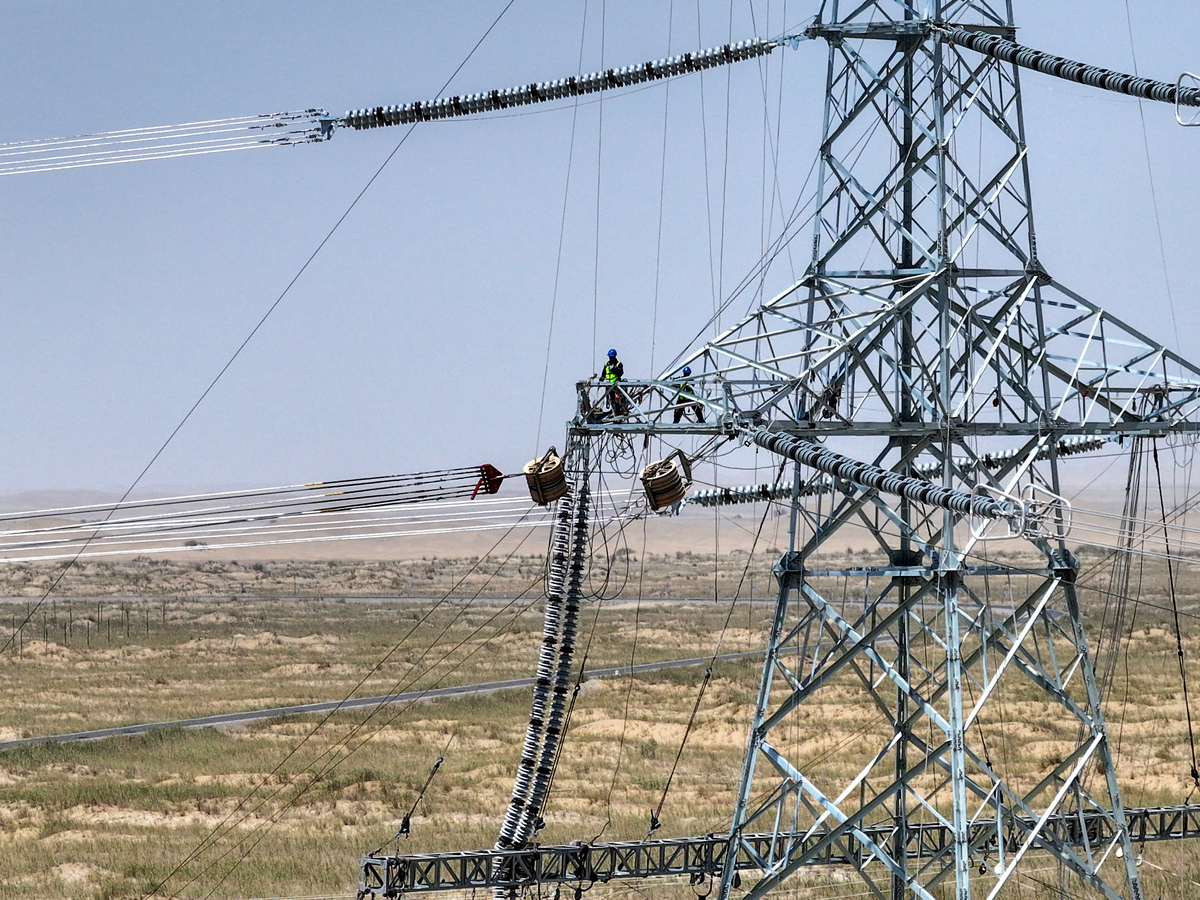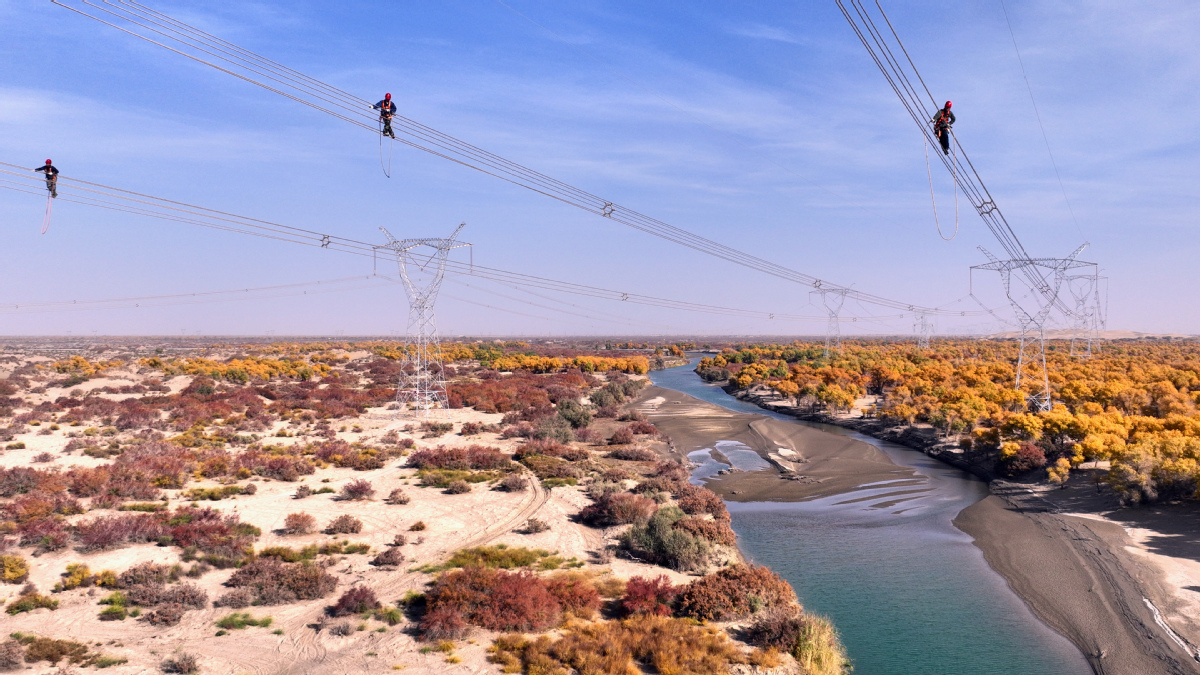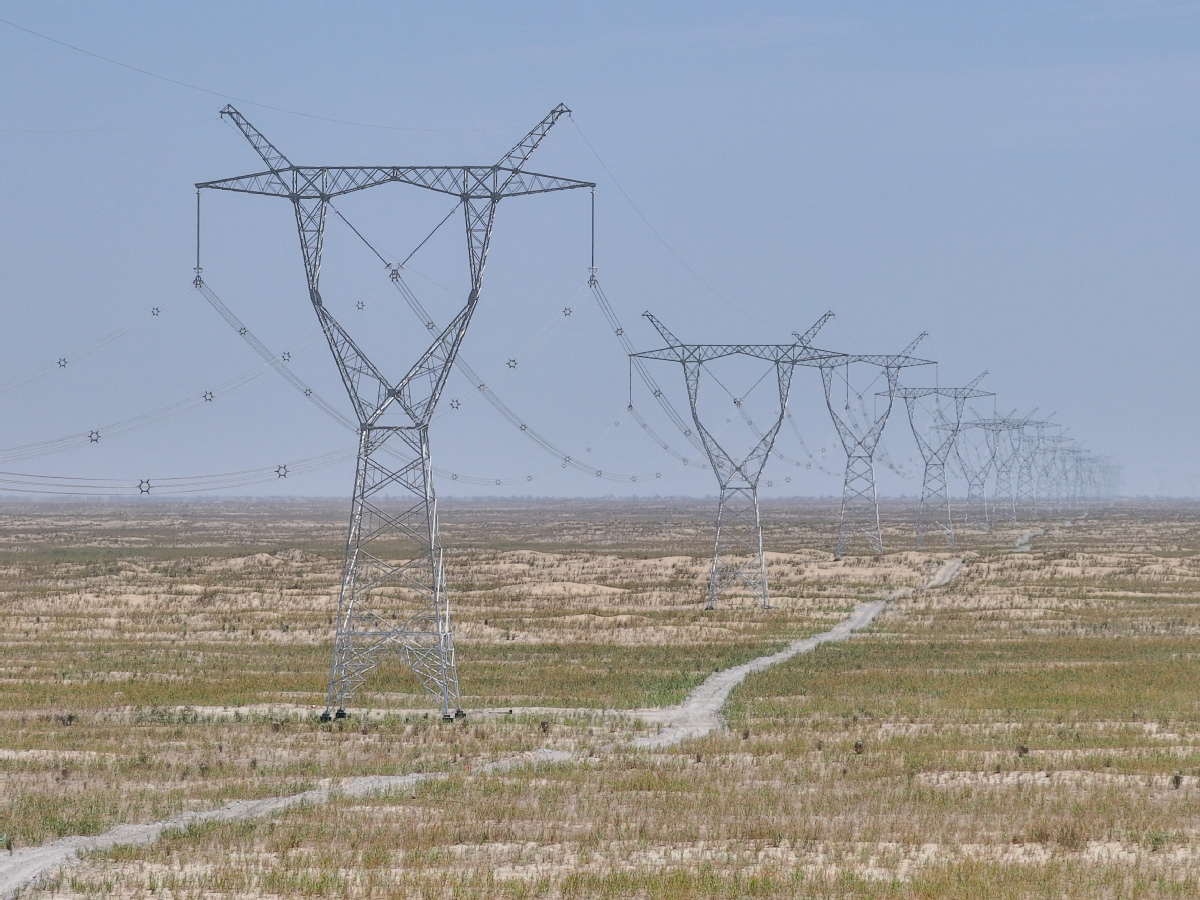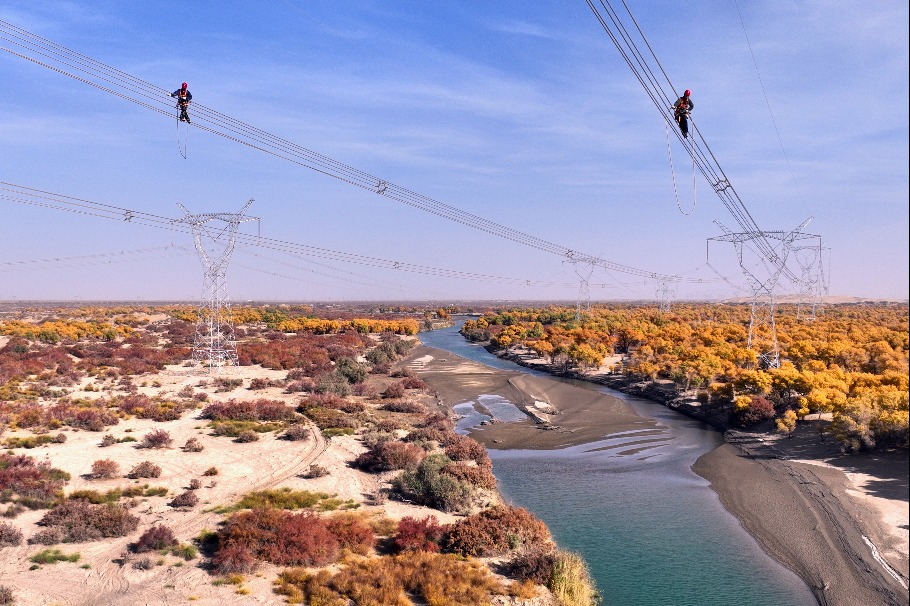China completes 'power expressway loop' around southern Xinjiang desert


URUMQI -- China has finished construction of a 4,197-km extra-high voltage power transmission loop around the Tarim Basin, home to the country's largest desert, marking a major infrastructure milestone in southern Xinjiang Uygur autonomous region.
The final section of the 750-kilovolt (kV) loop, now the country's largest of its kind, was connected on Sunday, capping a 15-year project involving nine substations and nearly 10,000 steel towers, according to a subsidiary of State Grid Xinjiang Electric Power Co., Ltd., which constructed the project.
Dubbed a "power expressway loop," the project is expected to become fully operational by November 2025, the company said.
Tarim Basin is home to the Taklimakan Desert, the world's second-largest drifting desert. For centuries, relentless sandstorms have battered the oases of southern Xinjiang, isolating them not only in terms of distance but also from the prospects of development.
Officials and experts say the project could put southern Xinjiang on a fast track to development and boost new energy supply nationwide.
The transmission line passes through extreme terrain, from the shifting sands of the desert to the high altitudes of the Kunlun Mountains.
Roads were built on the fly to transport materials across 50-meter-high dunes and in strong desert winds, while in the mountainous sections, cableways were used to haul nearly 3,000 tonnes of tower components, said Li Jun, a manager with the company.
To minimize the project's environmental impact, particularly on native desert plants such as populus euphratica, engineers adjusted tower heights, made minor route modifications, and will lay more than 480,000 square meters of straw checkerboard, a widely used method in China to stabilize sand, Li explained.

BRIDGING THE GAP
As of the end of May, installed new energy capacity around the Tarim Basin had reached 36.69 million kilowatts -- driven by abundant solar and wind resources.
The new grid loop allows electricity from wind, solar, hydro and thermal sources to be transmitted in less than a second, stabilizing the power supply for industries and households across southern Xinjiang, including the prefectures of Kashgar and Hotan.
Electricity consumption in southern Xinjiang rose to 73.7 billion kilowatt-hours in 2024, nearly seven times the level in 2010, with peak power load projected to reach 14.45 million kilowatts this year, up 14.29 percent from 2024, State Grid Xinjiang Electric Power Co., Ltd. has revealed.
This transmission loop was not part of the original blueprint when construction began in 2010. But surging power demand, spurred by rapid growth in sectors such as energy, mining, agriculture and tourism, prompted the integration of multiple segments into a full ring.
"The 750-kV power loop is like timely rain for southern Xinjiang, where the existing 220-kV transmission lines could no longer meet the growing demands of development," said Dilshat, an official from Qiemo county, located in the heart of the desert.
Dilshat added that the "power expressway loop" enables large-scale electricity transmission across Xinjiang and even beyond.
With its abundant power generation capacity, Xinjiang serves as a key hub in China's west-to-east power transmission program. According to Xin Chaoshan, an expert at the State Grid Xinjiang Electric Power Co., Ltd., the new loop allows solar power generated in this region to flow eastward, helping ensure stable electricity supply nationwide.
Developing 100 million kilowatts of photovoltaic power in southern Xinjiang and transmitting it to eastern and central regions of China could allow those regions to reduce thermal power capacity by 25 million kilowatts, according to company estimates.

POWERING NEW LIVES
The new power grid complements a growing network of infrastructure around the Taklimakan Desert, including highways, airports and railway lines.
"A multidimensional transport system is beginning to take shape, providing strong support for Xinjiang's high-quality development," said Guo Sheng, deputy director of Xinjiang's transport department.
Once plagued by poverty and underdeveloped infrastructure, southern Xinjiang has seen notable progress in recent years. Its GDP rose from 481.7 billion yuan (about $67.39 billion) in 2021 to 612.8 billion yuan in 2024, a 27.2-percent increase. Industrial added value surpassed 152.97 billion yuan last year, with over 200 new major industrial enterprises established.
Behind these figures lies China's unrelenting efforts to expand development opportunities for residents across the region, whether on the plateau or in remote villages tucked deep within the desert.
The new power grid is expected to deliver tangible benefits to more people.
In Karanggutag village, located in the Kunlun Mountains, electricity supply has become more stable since parts of the power loop were activated in April. The number of local shops has grown from four in 2018 to the current 48, with each equipped with a refrigerator or freezer.
"Now we can finally think about buying larger home appliances," said local resident Abdubesir Yehya. "Many families are even adding new energy vehicles to their wish lists. Things that were once out of reach are now becoming reality."























